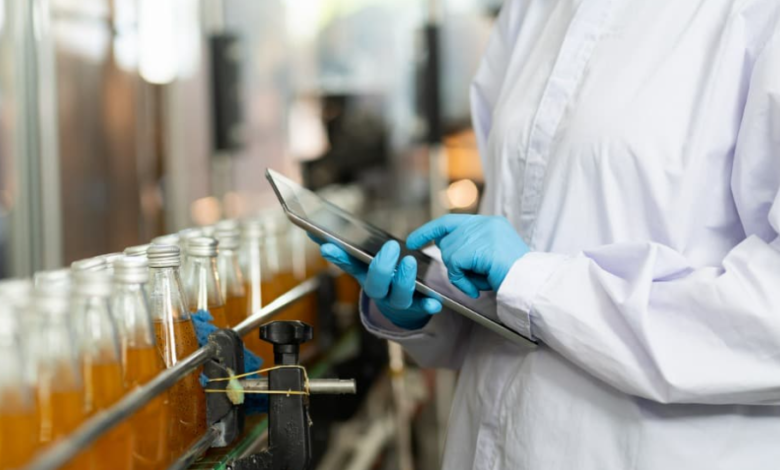Efficient Beverage Production Techniques

Introduction
In the beverage industry, maintaining the quality and consistency of beer during production is critical. One of the challenges faced by breweries is ensuring that pipelines and processing lines remain clean, free from contamination, and efficient. An effective solution widely adopted in modern breweries is the use of pigging systems beer.
These systems help improve product quality, reduce wastage, and optimize cleaning processes, making them a valuable tool for breweries of all sizes.
Understanding Pigging Systems Beer
Pigging systems beer refers to the application of pipeline pigs in beer production lines. These pigs are specially designed devices that travel through the pipelines to clean, inspect, or move the product without compromising quality. Unlike pigging systems beer standard pigging systems used in oil or gas, beer-specific pigging systems focus on hygiene, minimal product loss, and maintaining carbonation levels.
The main purpose of these systems is to efficiently displace beer from pipelines during batch changes, cleaning processes, or maintenance, ensuring no residue is left behind.
See also: Strengthening Digital Growth with Advanced Marketing Techniques
Benefits of Pigging Systems in Beer Production
Minimized Product Loss
A major advantage of pigging systems beer is that they can push nearly 100% of the beer in the lines into packaging or the next process step, reducing wastage significantly.
Enhanced Hygiene
Beer production requires strict hygiene standards. Pigging systems help maintain sanitary conditions by allowing for thorough cleaning between batches without introducing contaminants.
Efficient Cleaning Processes
Cleaning-in-place (CIP) procedures become more effective when paired with pigging systems, as pigs can remove residues and biofilms from the internal surfaces of pipelines.
Time and Cost Savings
By reducing manual cleaning and minimizing product loss, breweries can save both time and operational costs, leading to higher overall efficiency.
Components of Beer Pigging Systems
A typical pigging system beer setup includes several key components:
- Launchers and Receivers: These devices are installed at the start and end of the pipeline section to insert and retrieve the pig safely.
- Sanitary Pigs: Designed with food-grade materials, these pigs clean or displace beer without damaging the product.
- Pipelines: Stainless steel or food-grade piping that maintains product integrity.
- Control Valves and Flow Monitoring: Ensure the pig moves at the correct speed and does not compromise the line’s pressure.
Types of Pigs Used in Beer Production
Foam Pigs
Foam pigs are flexible and gentle, suitable for moving beer without foaming excessively.
Rubber or Polyurethane Pigs
These provide a better seal against the pipeline walls, ensuring minimal product is left behind.
Intelligent Pigs
Advanced systems may include pigs with sensors to monitor flow and detect any residues, ensuring consistent cleaning and product movement.
Industrial Applications
Pigging systems beer are used in several brewery operations:
Line Changeovers
When switching from one beer batch to another, pigging systems push the remaining product into storage or packaging, reducing waste.
Cleaning-in-Place
After production, pigging systems assist in cleaning the pipeline thoroughly, removing yeast, hops residues, or sediment efficiently.
Quality Control
By preventing contamination and ensuring consistent flow, pigging systems help maintain the flavor, carbonation, and overall quality of the beer.
Transport Between Tanks
Pigs can move beer between tanks without exposing it to air, preventing oxidation and preserving taste.
Implementing Pigging Systems in Breweries
To implement pigging systems beer effectively, breweries should consider:
- Pipeline Design: Ensure the piping system allows smooth pig movement without sharp bends or sudden diameter changes.
- Sanitary Design: Materials and pig designs must comply with food-grade standards.
- Training Personnel: Operators need proper training to handle the pigs safely and efficiently.
- Regular Maintenance: Both pigs and pipelines should be regularly inspected to prevent wear and contamination.
- Automation: Automated pigging systems can improve efficiency and reduce labor requirements.
Best Practices
- Schedule Regular Pigging Runs: Ensure consistent cleaning and product displacement.
- Monitor Pig Movement: Use flow sensors to track pigs and prevent blockages.
- Use the Right Pig Material: Select pigs compatible with beer characteristics to avoid foaming or product damage.
- Maintain Hygiene Standards: Clean and sanitize pigs before and after every run.
- Document Operations: Keep records of pigging runs for quality control and regulatory compliance.
Challenges and Considerations
While pigging systems beer provide significant advantages, breweries must be aware of potential challenges:
- Pipeline Complexity: Multiple bends or narrow sections may require specialized pigs.
- Initial Investment: Setting up pigging systems may require upfront costs, but long-term savings usually outweigh these expenses.
- Training Requirements: Staff must be skilled in operating the system safely.
- Sanitation Compliance: All components must adhere to food safety regulations to prevent contamination.
Future Trends
Modern breweries are increasingly adopting advanced pigging systems beer equipped with:
- Real-Time Monitoring: Sensors to track pig position and product flow.
- Automation: Fully automated pigging for minimal manual intervention.
- Custom Pig Designs: Tailored to specific beer types and pipeline configurations.
- Integration with CIP: Combining pigging with cleaning-in-place for complete pipeline maintenance.
These trends ensure higher efficiency, product quality, and operational reliability.
Conclusion
Pigging systems beer have become a critical tool in modern breweries. They ensure efficient product movement, minimize losses, maintain hygiene, and improve overall operational efficiency. By investing in the right systems and adhering to best practices, breweries can enhance production quality, reduce costs, and maintain a competitive edge in the market.
Proper implementation of pigging systems beer ensures that every batch of beer maintains its intended quality, flavor, and consistency, benefiting both producers and consumers alike.




